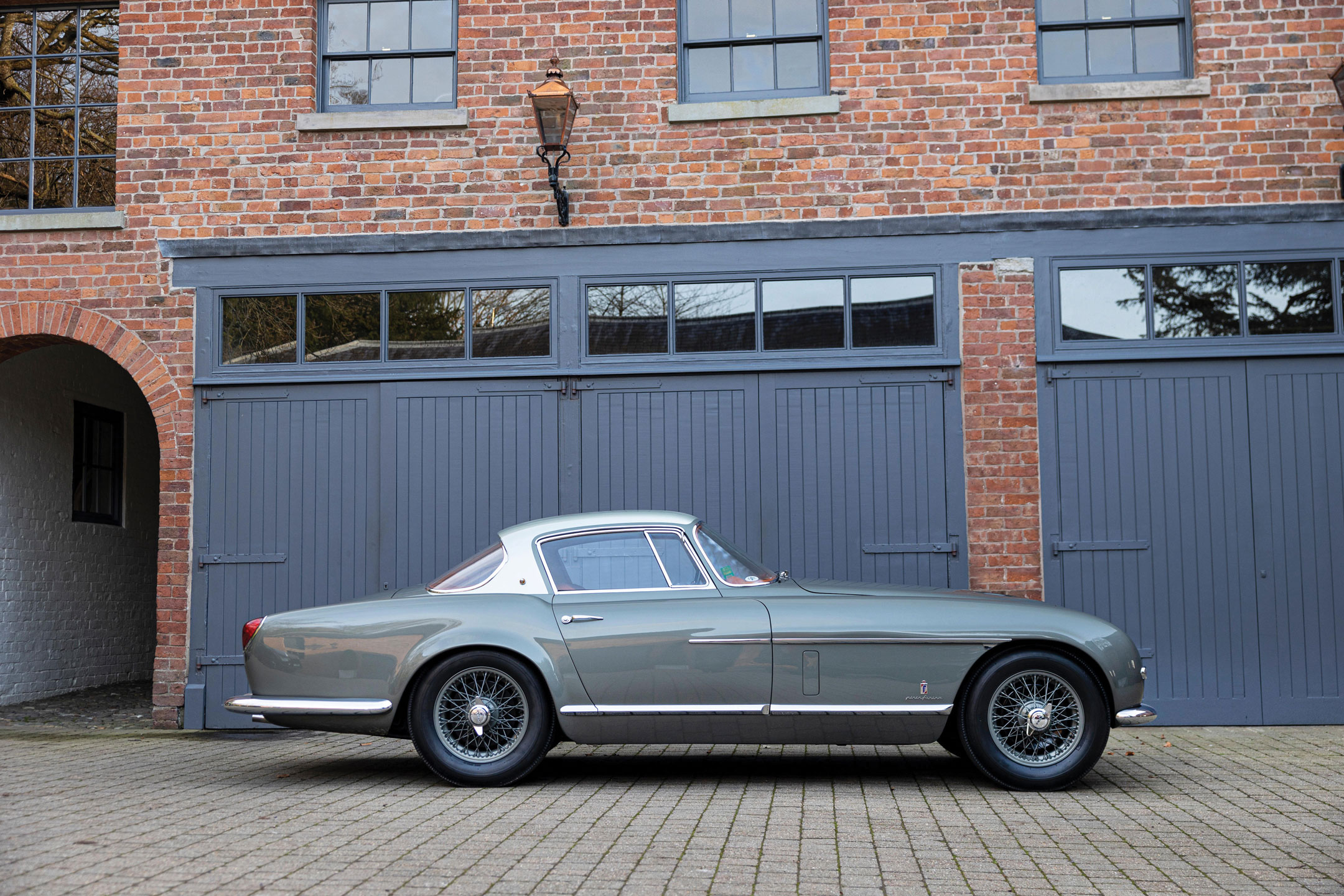Chassis Number: S675360
Arguably the most famous of all the rebodied Jaguar XK 120s, this solitary example by Carrozzeria Pinin Farina was dispatched new as a standard SE roadster to Max Hoffman (Jaguar’s U.S. East Coast distributor) in New York in May 1954. The accompanying Jaguar Heritage Trust certificate reveals that the car left the Browns Lane factory fitted with engine number F27358S and that it was originally finished in Pastel Blue with blue interior trim and a French Gray soft top.
The car was displayed at the Turin Motor Show in May 1955. According to marque specialist Roland Urban, the car was also displayed at the Geneva Motor Show in 1956 (see Jaguar XK120 in Detail by Anders Ditlev Clausager, Heritage & Sons, 2006). However, it has to be said that there are differences of opinion with regard to the shows and dates. In his book Pininfarina, Antoine Prunet states that the XK 120 was presented at the Geneva Motor Show in 1955, and that “it may have been constructed for a private client.”
It is quite likely that the car was constructed for Max Hoffman himself, as is now commonly assumed. Sadly, both Hoffman’s and Pinin Farina’s records have long since been lost, and it is not known to whom Hoffman sold the car. The trail picks up again in 1958, when Mr. Peter MacFarlane photographed the XK 120 in Fredericton, New Brunswick, Canada. The car was painted red with a cream hard top. Its owner was from Newton, MA, and was in town preparing for a fishing trip (an attached plate indicated that he was a member of the Newton Auxiliary Police). There are other photographs of the car in the file taken in 1967 and circa 1971.
In 1972, Pinin Farina’s XK 120 was acquired in a very sorry state by Ron Foster of Wilmington, NC, who had discovered the car in a field in Connecticut. Research suggests that Mr. Fred Nader of New Hampshire sold the XK to the Connecticut owner. When Ron Foster bought the car, its hard top had been removed, but fortunately, was still present. He had the car repainted and retrimmed and used it on the road, minus the missing rear windshield, until he sold it to collector Ludwig Draxel-Fischer in Germany circa 1978. Mr. Draxel-Fischer brought the car back to Europe with the intention of restoring it for his collection. However, he never got around to it, and when his longtime mechanic died, he offered the car to Jaguar Heritage. It declined, but in 2015 someone there contacted current vendor Peter Neumark, chairman of the Employee Ownership Trust that runs Classic Motor Cars, who went to Germany the following day and bought it.
CMC immediately set about restoring the Jaguar to its former glory. The 6,275-hour, last-nut-and-bolt restoration to “100-point” concours condition faced numerous hurdles, including the challenge of finding the original paint color and having to remake the bumpers and rear windshield. Other restoration details included a full-body makeover with a new front end, rear quarter panels, inner arch panels, boot floor, sills and door skins. The chassis was fully repaired and repainted, and the front and rear bumpers were remade together with 80% of the original chromework and the rear windshield and windshield surround. The interior was completely retrimmed. Under the hood, the engine and gearbox were rebuilt. The 3.4-liter straight 6 now produces 180 horsepower and drives via the original manual gearbox.
The car took home a second-place class award at the 2017 Pebble Beach Concours. The car also won the highly prestigious International Historic Restoration of the Year Award in 2017 as a result of its stunning return to 1956 Geneva Motor Show condition.

